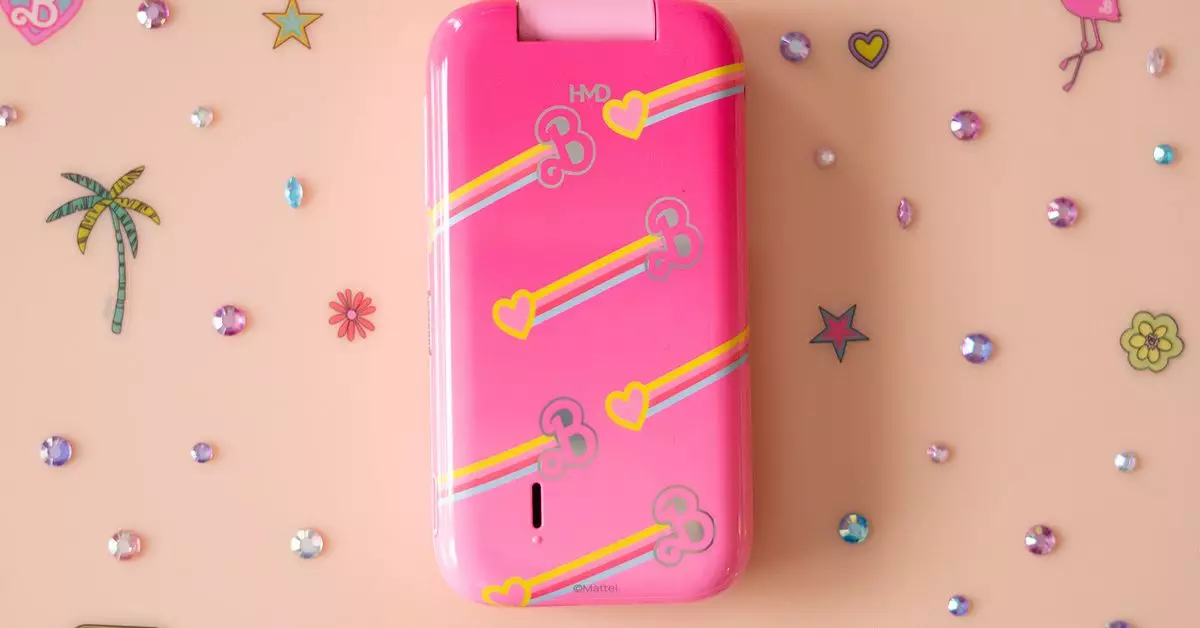The intersection of nostalgia and modern technology often results in products that capture our imagination but ultimately fall short of practicality. The Barbie Phone, a recent release that pays tribute to the iconic doll, exemplifies this phenomenon. While it dazzles with its cute aesthetics and vibrant branding, the reality of using this phone as a daily driver reveals significant shortcomings.
At first glance, the Barbie Phone is mesmerizing. For anyone who grew up with Barbie dolls, the phone’s design evokes a sense of nostalgia. The packaging is cheerful, adorned with bright colors and the signature Barbie style. The phone comes with customizable elements such as interchangeable backplates and rhinestone stickers that allow users to inject their personality into the device. However, once its eye-catching surface is peeled away, the limitations inherent in its design become painfully clear.
This device is based on HMD’s existing portfolio of feature phones, which means it is primarily geared towards basic functionalities: calling and texting. It operates on KaiOS, a platform that supports minimal connectivity features like an email client and a rudimentary web browser. While some may appreciate the throwback to more straightforward communications, it’s nearly impossible to ignore the convenience and versatility that modern smartphones offer.
HMD’s marketing pitch for the Barbie Phone leans heavily on promoting a digital detox. They advocate for a balance between the omnipresence of smartphones and the whimsical nature of the Barbie Phone. Tips embedded within the device emphasize the benefits of tech-free zones and the idea of spending quality time with friends in real life. While the intention is commendable, the execution leaves much to be desired.
Having the aspiration to disconnect in a world teeming with notifications and updates is one thing, but putting it into practice is another entirely. The novelty of the Barbie Phone may entice users, but configuring the device to meet even basic requirements becomes a tedious exercise in frustration. For example, entering a complex Google account password on a T9 keyboard can feel like a Herculean task. What is designed to encourage bonding over offline interactions quickly morphs into a cumbersome exercise that drives users back to their smartphones for efficiency.
Despite its visual appeal, the Barbie Phone falls short on a practical level. Simple tasks become unnecessarily complicated, convoluting the supposedly effortless experience HMD aims to provide. Throughout the review process, syncing calendars resulted in appointments appearing on incorrect days, and attempts to listen to FM radio were thwarted when the app refused to recognize earphones plugged into the 3.5mm jack. Such frustrations may lead one to question the device’s overall functionality: is it a valuable communication tool, or is it more of a novelty item?
Even the phone’s aesthetics can quickly turn into a downside. The glossy front mirror, a staple of the Barbie branding, might seem cute at first. However, seeing one’s own unacknowledged morning face every time a notification arrives can evoke a moment of existential dread—an unsettling reminder of real life that quickly dulls the charm of using this toy-like phone.
While the Barbie Phone can undoubtedly garner attention for its whimsical design and nostalgic nod, it is far from being a functional device for daily usage. It serves well as a collector’s item—an exciting piece of memorabilia to be admired and occasionally picked up for a smile rather than a reliable form of communication. The dual-functionality of a fun gadget and a practical phone proves elusive. After all, while one might enjoy the concept of stepping back from the complexities of modern life, that charm wanes when the phone in question is less about connection and more about confusion.
Ultimately, investing in the Barbie Phone is likely to be a delightful mistake for those hoping to rely on it for daily connectivity. For many, it will remain a lovely trinket, joining the ranks of collectibles that are fun to display but impractical to use—much like the original Barbie dolls themselves.


Leave a Reply